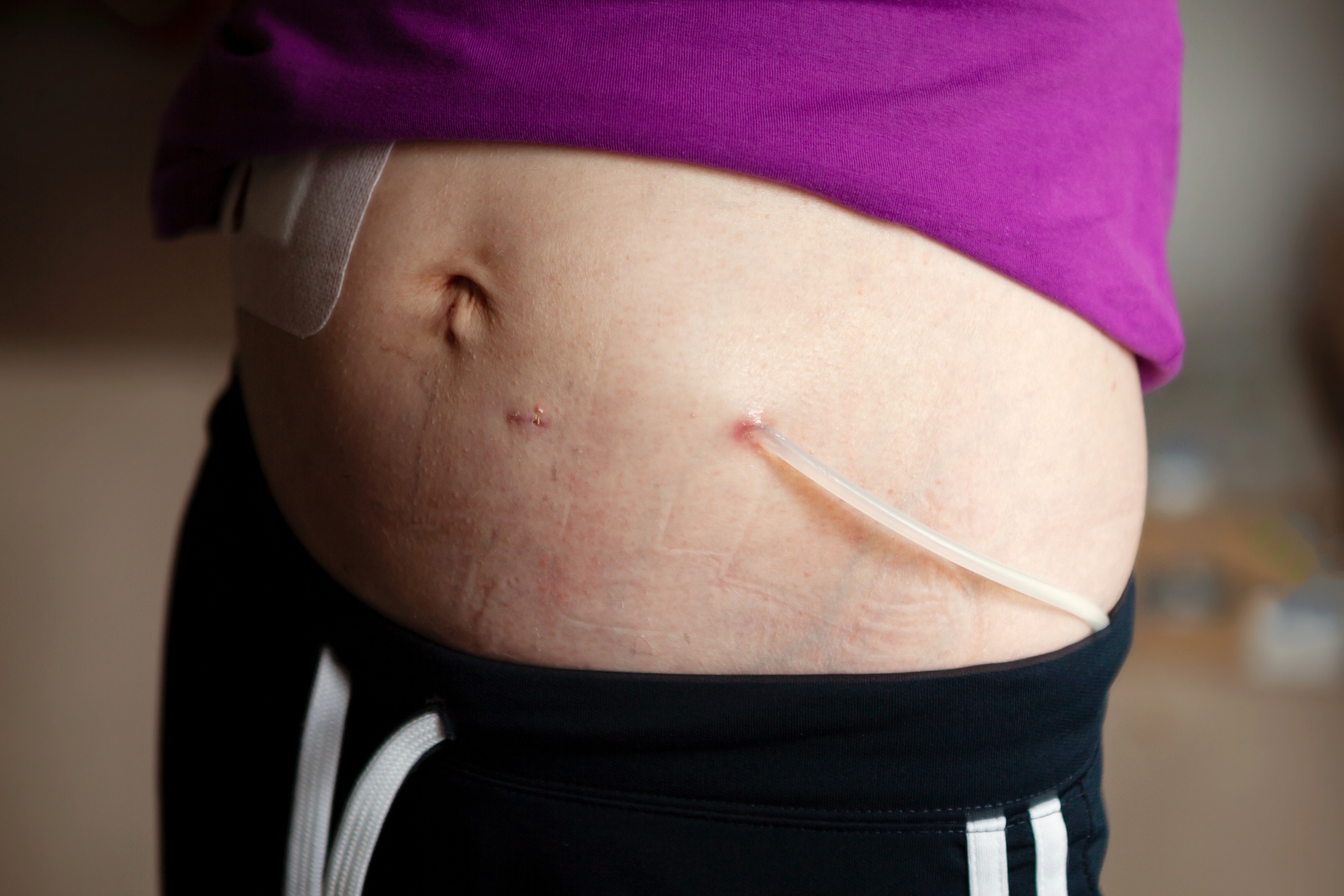
Postmenopausal women commonly develop osteoporosis, which is associated with a loss of bone density, weak and brittle bones, and increased risk of fracture. Compared with the general population, patients with chronic kidney disease (CKD) have a greater risk of fracture. Among patients undergoing long-term dialysis, the prevalence of CKD-mineral and bone disorder (CKD-MBD) is high.
CKD-MBD is characterized by abnormalities of serum phosphorus, calcium, parathyroid hormone, and vitamin D; abnormalities in bone turnover, mineralization, volume, and strength; and vascular calcification. Older dialysis-dependent patients are at high risk of low bone mass associated with primary osteoporosis, CKD-MBD, or both.
The Kidney Disease: Improving Global Outcomes guidelines do not endorse a specific treatment strategy for bone disease in patients dependent on dialysis but recommend that the risks of treatment be weighed against the underlying bone phenotype. Steven T. Bird, PhD, PharmD, and colleagues sought to examine the incidence and differential risk of severe hypocalcemia in female patients receiving long-term dialysis treated for osteoporosis with denosumab or oral bisphosphonates. Results were reported in JAMA.
The retrospective, cohort study included women who were Medicare beneficiaries, dependent on dialysis, and ≥65 years of age. Eligible patients initiated treatment for osteoporosis with denosumab or oral bisphosphonates from 2013 to 2020. Linkage to the Consolidated Renal Operations in a Web-Enabled Network database was used to obtain clinical measures. The study exposures were denosumab 60 mg or oral bisphosphonates.
The primary outcomes of interest were severe hypocalcemia, defined as total albumin-corrected serum calcium below 7.5 mg/dL, or a primary hospital or emergency department hypocalcemia diagnosis (emergent care). The study also assessed the incidence of very severe hypocalcemia, defined as serum calcium below 6.5 mg/dL, or emergent care. During the first 12 weeks of treatment, inverse probability of treatment-weighted cumulative incidence, weighted risk differences, and weighted risk ratios were calculated.
The study included 1523 women who were treated with denosumab and 1281 who were treated with oral bisphosphonates, weighted to 1501 oral bisphosphonate users in the balanced cohort. More than 90% of those in the oral bisphosphonate users group received alendronate (91.8%); 75.7% of those received 70 mg weekly. In both groups, nearly all participants had no antiresorptive treatment in the prior 15 months (95.8% in the denosumab group and 99.1% in the oral bisphosphonate group).
Because the participants in the denosumab group received an injection every 6 months, they were considered exposed for the entire study time. In the oral bisphosphonate group, 322 (21.5%) women discontinued treatment in month 2 and 90 (6.09%) discontinued treatment in month 3. Following weighting, the two groups were well balanced for all covariates. The mean age in the denosumab group was 74.5 years versus 73.8 years in the oral bisphosphonate group.
In both groups, nearly all participants had a diagnosis of osteoporosis (98.4% in the denosumab group and 97.8% in the oral bisphosphonate group), as well as markers for CKD-MBD, including hyperparathyroidism (97.0% vs 97.3%), use of a vitamin D analogue (62.1% vs 66.4%), and use of a phosphate binder (non-calcium based, 54.7% vs 55.5%; calcium based, 31.0% vs 33.3%).
Most denosumab (55.7%) and oral bisphosphonate (90.7%) prescriptions were from primary care physicians. Endocrinologists and rheumatologists prescribed a larger share of denosumab (29.2%) than of oral bisphosphonates (2.3%). Nephrologists infrequently prescribed either denosumab (2.3%) or oral bisphosphonates (2.6%).
Prior to initiation of therapy, median total albumin-corrected serum calcium levels were similar between the two groups (9.3 mg/dL for the denosumab group and 9.2 mg/dL for the oral bisphosphonate group). Following initiation of denosumab, median levels of serum calcium dropped sharply within the first month and remained below baseline for 4 months. In the oral bisphosphonate group, median serum calcium levels remained unchanged. Most cases of severe hypocalcemia with denosumab occurred during weeks 2 through 5; an increased probability of severe hypocalcemia remained through approximately post-treatment week 10.
In unweighted cohorts, 39.9% (n=607) of the 1523 patients treated with denosumab and 1.8% (n=23) of the 1281 patients treated with oral bisphosphonates developed severe hypocalcemia. There was a sharp rise in the weighted cumulative incidence of severe hypocalcemia within 1 week of initiation of denosumab, and by 12 weeks reached 41.1% (95% CI, 38.5%-43.6%), compared with 2.0% (95% CI, 1.0%-3.0%) among oral bisphosphonate users (weighted risk difference, 39.1% [95% CI, 36.3%-41.9%]; weighted risk ratio, 20.7 [95% CI, 13.2-41.2]; and weighted hazard ratio [HR], 26.6 [95% CI, 15.8-44.9]).
By 12 weeks, the weighted cumulative incidence of very severe hypocalcemia was 10.9% in the denosumab group, compared with 0.4% in the oral bisphosphonate group (weighted risk difference, 10.5% [95% CI, 8.8%-12.0%]; weighted risk ratio, 26.4 [95% CI, 9.7-449.5]; and weighted HR, 28.0 [95% CI, 8.4-93.6]).
In the denosumab group, the incidence of severe hypocalcemia was substantially higher among those with mild to moderate hypocalcemia (7.5 mg/dL to <8.5 mg/dL) at treatment initiation compared with those with normal baseline serum calcium (>8.5 mg/dL; incidence, 62.9% vs 30.0%, respectively).
Among patients with severe hypocalcemia, 10.7% (n=65/607) treated with denosumab and none treated with oral bisphosphonates required hospitalization following diagnosis. Among 549 patients in the denosumab group who had 90 days or more of subsequent Medicare enrollment, serum calcium returned to normal by day 90 in 65.8% (n=361).
Limitations to the study findings cited by the authors included not using a randomized trial design, lack of data on the decision to prescribe denosumab versus oral bisphosphonates, as well as lack of laboratory data for levels of vitamin D, alkaline phosphatase, or parathyroid hormone. They also noted an inability to measure over-the-counter supplementation with calcium and vitamin D and adherence to supplementation recommendations.
In conclusion, the researchers said, “This study identified a higher incidence of severe and very severe hypocalcemia after denosumab initiation compared with oral bisphosphonates in dialysis-dependent patients with mild to moderate hypocalcemia at baseline. Given the complexity of diagnosing the underlying bone pathophysiology in dialysis-dependent patients, the high risk posed by denosumab in this population and the complex strategies required to monitor and treat severe hypocalcemia, denosumab should be administered after careful patient selection and with plans for frequent monitoring.”
Source: JAMA






 © 2025 Mashup Media, LLC, a Formedics Property. All Rights Reserved.
© 2025 Mashup Media, LLC, a Formedics Property. All Rights Reserved.